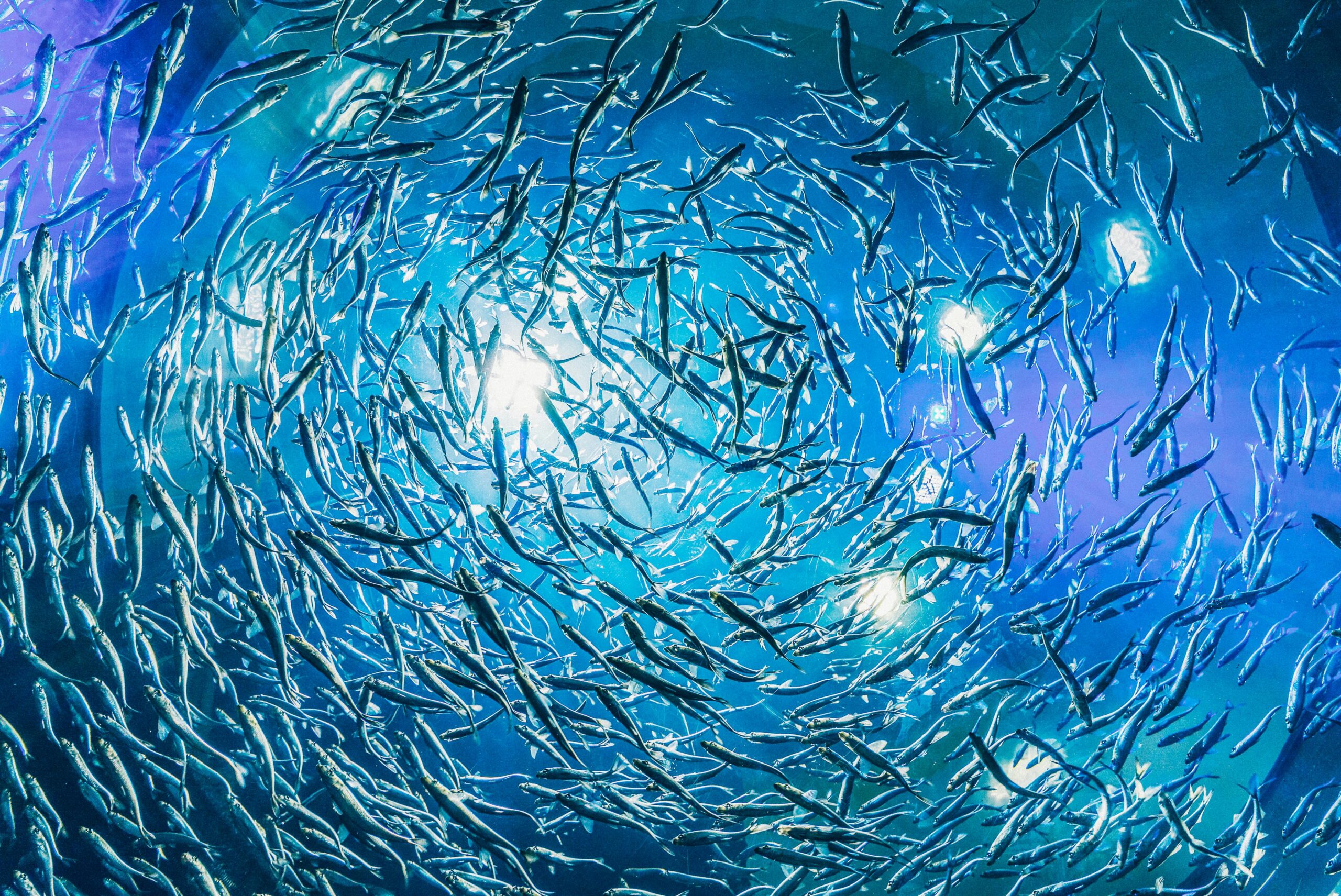Juan Carlos Cárdenas, Ecocéanos Center, Chile and Elsa Cabrera, Cetacean Conservation Center
Every June 8, governments and communities around the world celebrate World Oceans Day. Established during the Earth Summit in 1992 in Rio de Janeiro, Brazil, this day serves as a reminder of the hollow commitments made by world leaders, politicians, and financiers who promise to protect our oceans under the guise of corporate responsibility—often after signing agreements that pledge their commitment to safeguarding the planet.
Three decades after this important day was first recognized, our oceans and seas are still being plundered for their precious and often overlooked biodiversity. Instead of being treated with care, they are seen as vast dumping grounds for thousands of tons of urban and industrial waste every day—both legally and illegally—with governments routinely breaking their promises on marine conservation.
The United Nations (UN) established June 8 to highlight the critical importance of oceans for all forms of life on Earth. Yet, it’s concerning that this global institution is becoming increasingly paralyzed by geopolitical conflicts and commercial interests, especially the struggles between emerging powers and those facing political, economic, and military decline. In a world that’s shifting toward a multipolar landscape, the UN’s current dysfunction and inability to fulfill its original missions—like maintaining peace, ensuring global security, protecting human rights, and fostering social and economic development—has become painfully clear.
In September 2024, there was an unsuccessful attempt to reform the UN’s structure and operations during the Future Summit held at its headquarters in New York. This initiative was thwarted by economic powers and geopolitical interests that keep it trapped, preventing the UN from carrying out its essential duties.
When the Paris Agreement Seems Like Just Empty Words
The United Nations Educational, Scientific and Cultural Organization (UNESCO) reports that both ocean surface temperatures and salinity are rising at double the rate they were just two decades ago. While atmospheric temperatures can change unpredictably, ocean temperatures keep climbing steadily. This warming impacts surface currents, causing them to speed up, while deeper waters slow down or even change direction, which disrupts global heat distribution and marine ecosystems. In many areas of the Mediterranean and Atlantic, temperatures have already risen 2°C above pre-industrial levels, surpassing the 1.5°C limit set by the Paris Agreement to avoid catastrophic global consequences.
Moreover, oceans play a vital role in mitigating the harmful impacts of the destructive industrial extractive model. They absorb roughly 25% of the carbon dioxide emissions we release annually into the atmosphere, helping to counteract climate change. Unfortunately, it’s marine biodiversity that pays the steepest price. As oceans acidify, the shells and exoskeletons of various sea creatures weaken and dissolve, leading to devastation in coral reefs and the unique coastal areas of our planet.
This ongoing deterioration is resulting in a serious drop in food availability for many marine species. It disrupts the populations of commercially valuable species that are crucial for the diets of over 3 billion people worldwide. Currently, around 50% of the global population relies on oceans for their livelihoods, while about 40%—approximately 2.4 billion people—live within just 100 kilometers (about 62 miles) of coastal regions.
Our Plastic Waste: A Threat to Everyone and Here to Stay
It’s estimated that 170 trillion particles of plastic are floating in our oceans, contaminating food chains. Projections suggest that by 2045, global plastic production will double, mainly driven by oil-producing countries that resist regulation. Although they acknowledge the need to cut back, their efforts are minimal, posing a significant threat to the implementation of the Global Plastics Treaty. In December 2024, this treaty—designed to tackle this dire threat to human health and the oceans—entered a “coma” during its latest session in South Korea, thanks to powerful corporate lobbying.
In Chile, where aggressive neoliberal policies have even privatized water, powerful fishing and intensive salmon farming industries continue to recklessly discard tons of synthetic nets along coastlines and seafloors. This results in a tragic “hidden toll” of whales, dolphins, sea lions, birds, and turtles dying each year from entanglement and asphyxiation, while authorities fail to take effective preventive measures—all to protect the profits and reputation of these mega-corporations, which represent the second-largest export sector in the country. These companies are currently under scrutiny due to the long-delayed implementation of the U.S. Marine Mammal Protection Act (MMPA), which, if enforced, will impose trade sanctions on Chilean fish exports to North America if they have negative impacts on marine mammals.
Krill Fishing and Intensive Salmon Farming: Major Threats to Whales in Patagonia and Antarctica
The marketing strategy of Chilean governments has successfully portrayed the country on the international stage as an environmentally conscious market economy, claiming to protect 30% of its ocean territory by 2030. Official statements suggest that 43% of its Exclusive Economic Zone (EEZ) is under some form of protection, including 23% designated as highly protected marine parks. However, this claim masks a harsh reality: 411 industrial salmon farming centers are operating destructively within national parks and other protected coastal regions in Chilean Patagonia, contributing to 40% of the exports from this mega-industry, which is now the world’s second-largest producer of farmed salmon after Norway. Moreover, these protected areas are part of the ancestral lands of the Kawesqar and Yagán peoples.
These regions of Patagonia, with a fleet of around 1,000 vessels transporting food and salmon through fjords and channels, along with both artisanal and industrial fishing fleets, significantly contribute to a disturbing trend. According to a recent report published in Marine Policy, Chile has the highest whale mortality rate due to vessel collisions in the world since 2013. Among cases with identifiable causes, nearly one-third (28%) have been linked to collisions, while 7% resulted from entanglements and 3% from natural predation.
In addition, fishing activities mean that 53% of national fisheries are either collapsed or overexploited, with illegal catches exceeding legal quotas by over 300%, which severely impacts coastal marine ecosystems.
In the sub-Antarctic and Antarctic regions, efforts by the Convention for the Conservation of Antarctic Marine Living Resources (CCAMLR) to protect Antarctic krill have largely failed. This important crustacean, which is essential to the marine food web, was supposed to be protected under the CCAMLR since the 1980s but has faced significant threats due to advances in technology that enable large-scale harvesting. Now, the availability of krill crucial for numerous Antarctic species is under threat.
Various industrial fleets are focusing their extractive operations in key feeding areas for different whale species in Antarctic waters, driven by profit motives linked to billion-dollar industries in nutraceuticals and intensive aquaculture. The outcome? An alarming rise in the mortality of large whales—including at least two deaths attributed to a Chilean fishing company.
Despite the majority of CCAMLR members trying to create Marine Protected Areas to conserve the rich biodiversity in Antarctic waters, these proposals have been consistently blocked by a small group of countries. Binding decisions within CCAMLR can only be made by consensus, which complicates efforts to ensure protection.
The IWC: A Potential Future Threat to Global Whale Populations?
In this context, the International Whaling Commission (IWC) represents another example of how international law is often filled with good intentions that rarely turn into action. Despite a global moratorium on commercial whaling, Japan, Norway, and Iceland continue to hunt whales each year, while Japan’s diplomatic efforts are systematically undermining conservation measures and the IWC itself. Their goal is clear: to reopen commercial whaling—especially in the Southern Hemisphere—as part of a broader militaristic agenda in the Pacific and Antarctica.
Adding to this, the U.S. government recently granted hunting permits to the Makah tribe, who have not hunted whales in decades, allowing them to capture gray whales. This controversial decision not only creates conflict with other nations—since these whales are integral to the whale-watching tourism that supports coastal communities in Mexico and Canada—but it also threatens the survival of the species. Currently, gray whales are experiencing periodic mass mortality events that significantly impact their populations.
Science has clearly shown the crucial role that whales play in maintaining healthy oceans and ensuring that marine ecosystems function properly. However, members of the IWC continue to cater to the interests of whaling nations, pushing for resolutions that support Japan’s arguments, including claims that whales are essential for global “food security.” If the IWC approves this resolution—driven by Japan’s whaling interests—by 2026, it will undermine the very conservation goals it was created to achieve.
2030: A Distant Dream for the 30×30 Agenda Commitments
As part of the 2030 Agenda—a global action plan adopted by the UN in 2015 aimed at creating a sustainable and equitable future, which is part of the Global Biodiversity Framework (GBF)—196 countries committed in 2022 to protect 30% of the oceans by 2030. However, to date, only 2.7% of marine protected areas (MPAs) have real protections in place. Many countries, including several in Europe, still permit destructive fishing activities within their MPAs.
The situation is no better on the high seas: proposals for deep-sea mining operations continue to advance despite opposition from various governments, environmental organizations, and coastal communities. Meanwhile, the High Seas Treaty (BBNJ)—a major achievement in 2023 aimed at regulating activities in this massive ocean area—requires ratification by at least 60 countries to take effect. So far, only seven countries have ratified it, indicating a slow and arduous path forward, particularly if the U.S. does not sign or ratify, which may lead other countries to follow suit.
What Will We Celebrate on World Oceans Day?
On June 8, 2025, social media will be flooded with empty rhetoric from foreign ministers of relationships, fishing, and the environment, along with hashtags, images of whales, clean beaches, and turquoise waters. All the while, our oceans, their biodiversity, and traditional coastal communities are struggling, suffocating, or disappearing due to rising incidents of pollution from chemicals, organic waste, plastics, and hydrocarbons. There’s not much to celebrate.
Only a united and informed push from citizens, scientists, and local communities demanding accountability from governments and businesses can help us overcome the rising tide of socio-environmental challenges caused by the destructive impacts of extractive and privatizing models for our oceans. It’s time to take action and work together to protect what remains of our precious oceans for future generations.



